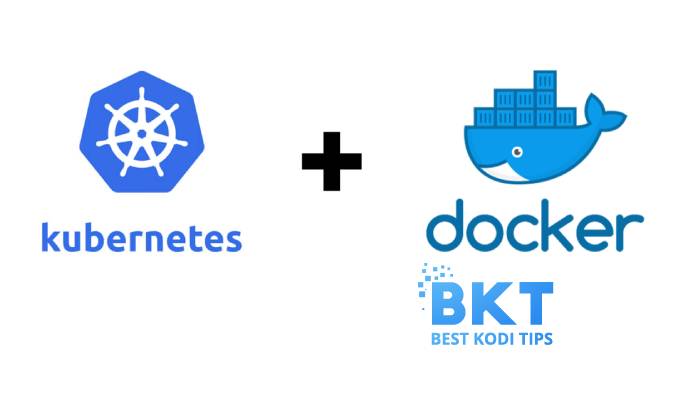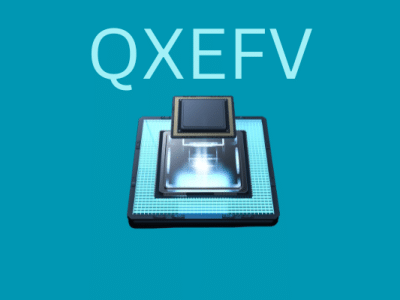We all know that automated testing offers many benefits for testing professionals. They can reduce the testing efforts, perform better regression testing, provide better coverage and add positivity. The client always demands better products, requiring consistent improvement and innovative ways to speed up the testing procedure and make it efficient. Many advanced testing tools exist with Selenium, Playwright, Appium, etc. In this article, we are discussing using Selenium with Kubernetes and Docker.
Kubernetes
A framework called Kubernetes makes it possible to run Docker containers in a clustered environment. Its main duties include scaling and managing containerized apps and automating application distribution.
For cloud-based apps and micro-services, Kubernetes is a tool that aids in managing resource distribution and traffic management. It allows us to control where and when containerized applications are executed and make finding the tools and resources we need to work together easier.
Selenium with Kubernetes
The out-of-the-box integration with Kubernetes significantly reduces the time needed to perform tests by automatically spinning up Docker containers of the necessary web browsers and running them in parallel. In actuality, this refers to horizontally broadening the purview of your evaluations. You won’t have to deal with the hassle of setting up and keeping the Grid. You won’t need to worry about containers or pods right away as a consequence. Instead, Kubernetes is in charge of maintaining the intended state of the system through automatic management.
Selenium with Docker
Regarding Selenium automation testing, tests must run in one execution environment and do not negatively impact the efficacy of tests run in another test environment. This “essential” criterion that automated tests should be run in a separate environment is made possible by Docker.
It is quicker and simpler to perform code reviews when Selenium tests are run inside Docker containers, which results in higher-quality code, more thorough testing, and the production of superior-quality products. With Docker, users can isolate tests during the development and deployment steps or run tests inside containers. Selenium and Docker together are suggested for web application evaluation for various reasons.
Why Should Docker and Selenium Testing Be Combined?
Testing in various browsers is one of the most crucial uses of Docker containers in the Selenium testing process. Cross-browser testing is a form of non-functional testing that allows you to check whether your website works as intended across various operating systems and browser configurations. With so many various browser-operating system combinations, creating test environments becomes challenging. Docker containers can be used to erect these quickly, and once the testing is finished, they can be brought down.
Another use for selenium testing is parallel testing, which uses Docker containers. The sequential execution of tests takes a long time because there are so many tests to run. Thus, running the tests one after the other helps save a lot of time and also helps in providing input much faster. Parallel testing, however, necessitates installing a sizable quantity of infrastructure. That would immediately affect the final cost. Docker containers can be used to run numerous containers on a single server. This permits parallel testing and provides for the best possible use of the underlying hardware.
Guidelines for Successful Docker-Based Selenium Test Execution
If they are not correctly managed, things can become out of sync when running multiple containers for various tests on the same server. The underlying hardware will abruptly cease working due to excessive resource consumption, defeating the purpose of using containers in the first place and making them useless.
Following these suggestions will help ensure that containers are used as efficiently as possible during testing:
- Use containers as microservices:
You can reduce the size of your containers by setting up tiny Docker containers that each house one program or instance. It also allows combining various containers in novel ways to achieve the largest coverage possible. For instance, having each component housed in a separate container would be beneficial rather than building a single container that includes the Selenium WebDriver, Web Application, and the Operating System.
- Set up a test environment:
By doing this, the environment is kept safe, and the results of the current iteration aren’t affected by cache and temporary files from previous rounds.
- Parallel testing:
It can help you save time and ensure the underlying technology is used fully.
The need of the hour is to produce software of the highest quality in the shortest amount of time feasible due to rapidly rising user expectations and fierce market competition. Software development lifecycles that allow adding new features while maintaining the highest efficiency and productivity were only feasible thanks to the continuous integration and delivery (CI/CD) methodology.
As a result, end users get a seamless user experience because they can use freshly added features without downloading any software updates. Given the brief nature of the release cycle, testing must be scaled up to create bug-free software within the allotted time frame. Selenium shines as a crucial player in providing automation for testing throughout the CI/CD pipeline.
Using tools like LambdaTest can help you with great testing tools. You can sign up for free and start using their platform within minutes.
Why should one use Selenium with Docker when testing web applications?
We will look at some of the most significant benefits that make using Selenium with Docker an excellent combination. These benefits include the following:
Scalable and reliable
The Selenium Grid must be downloaded and executed on the same machine that was used to set up the Selenium Grid when you are configuring it. A typical Selenium Grid configuration involves hosting multiple VMs (Virtual Machines) as “Nodes” and connecting the “Nodes” to a single “Hub.” In addition, the virtual machines (or machines) that serve as Selenium nodes should be made accessible for browsers and the browser drivers associated with each browser.
Due to the need for ongoing maintenance and upgrades to keep the infrastructure suitable for testing, this approach is neither scalable nor dependable. Additionally, running Selenium Grid increases the needless overhead in the computation.
Even though they are packaged together in a single image, the Docker images used for Selenium’s cross-browser testing comprise multiple servers. Additionally, Docker images share some system resources, as opposed to virtual machines, which reduces the overall utilization of those resources.
Locally hosted web pages
As an alternative, Docker containers provide access to numerous local development locations. If you run Docker containers on Windows or Linux with the -host option, you can try locally hosted websites more quickly. The Docker runtime environment offers this choice.
Less expense for the setups
The host machine does not need to have the necessary web browsers and browser drivers loaded to use Selenium with Docker. Starting with Selenium web automation testing using pre-made Docker containers is generally a much quicker procedure than installing and configuring the Selenium Grid.
Enhanced Security
A sandboxed environment is used for the execution of Docker’s containers, making it a flexible and safe containerization framework. The degree of security that can be attained is significantly higher when Selenium tests are run inside a Docker container instead of on the local Selenium Grid.
There is less chance for contradictions
The installed Docker container can be shared with other users, and whether Linux or macOS is used as the operating system doesn’t impact the container’s functionality. For instance, tests conducted on a Windows-based container would operate flawlessly when transferred to a Linux-based container.
As a result, the team could use the same container independent of each group member’s operating system.
Selenium Crash
There is a good possibility that you will see a Selenium system failure if you are a member of a Selenium Grid in the area. Even though it might be inconvenient, the Grid must be restarted for the required nodes to connect.
Because using a Docker container only requires you to delete the previous instance of Selenium and start a new one whenever required, you can put your worries about a system crash to rest. Setting up everything for Selenium online automation testing takes only a few seconds. It is relatively simple to stop and start the Docker container containing the Selenium Hub and Nodes in both ways.
Docker with Selenium 4
The development of Selenium 4, which is presently in the Alpha stage, has garnered considerable attention from both the Selenium community and Selenium users. Selenium 4 includes support for Docker in addition to several major improvements, such as WebDriver W3C protocol support, the addition of relative locators, an improved Selenium Grid, and a practical Selenium IDE.
Using Docker images for Selenium, you can start the standalone container for Selenium 4 Grid Server using Firefox, Chrome, or Opera. Selenium 4 provides several ways to set up and customize the Hub and Nodes and create a network of Hub and Nodes. These procedures entail using Docker files.
Web testing tools are marking their way up every day. Selenium, since its launch, has marked its presence in the market. With Kubernetes and Docker, Selenium can be used effectively for varied testing scenarios. Both of the platforms are readily used with Selenium, especially Docker has many applications. We have tried to cover the maximum information about both tools, have a look.















Comments